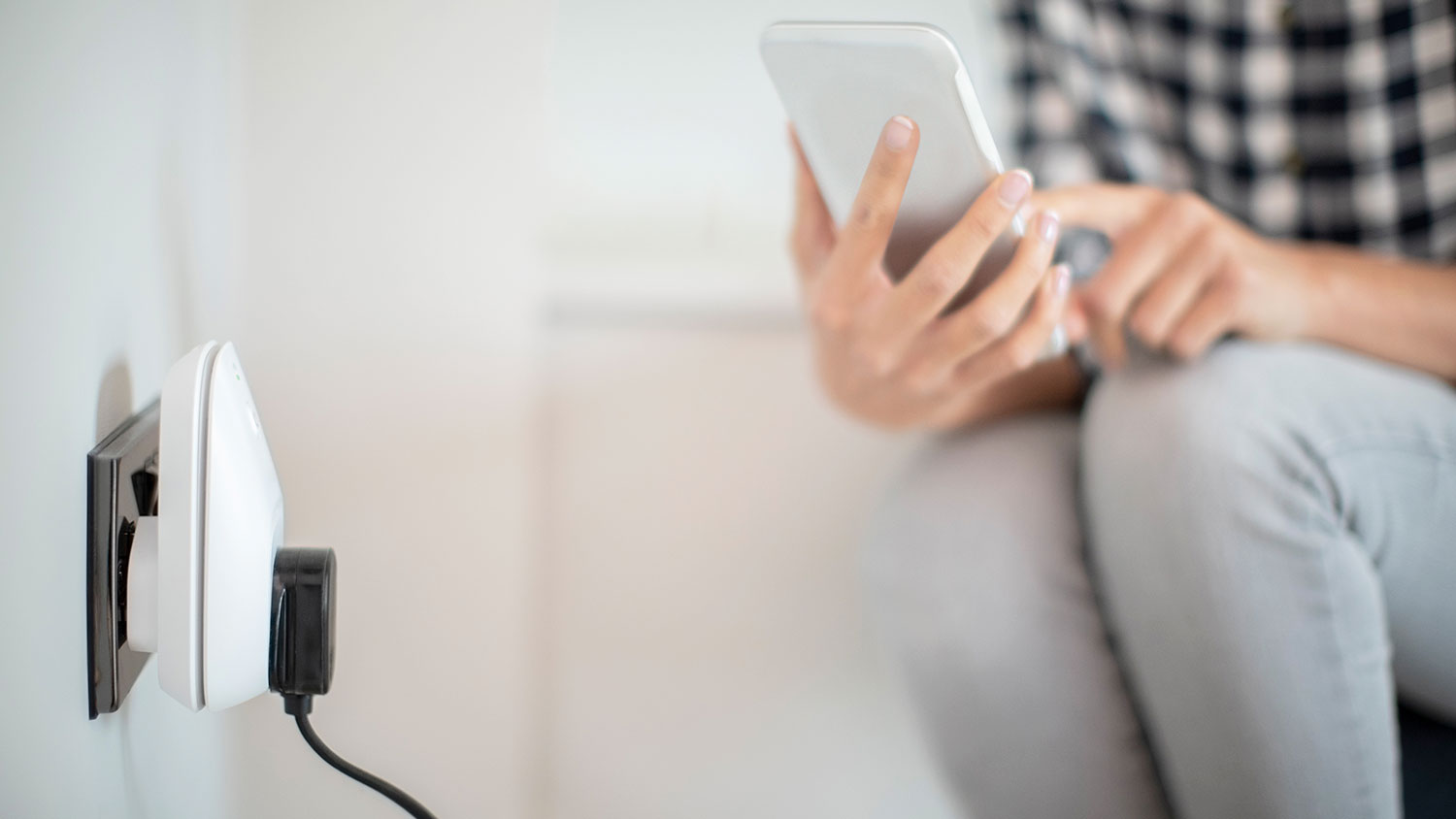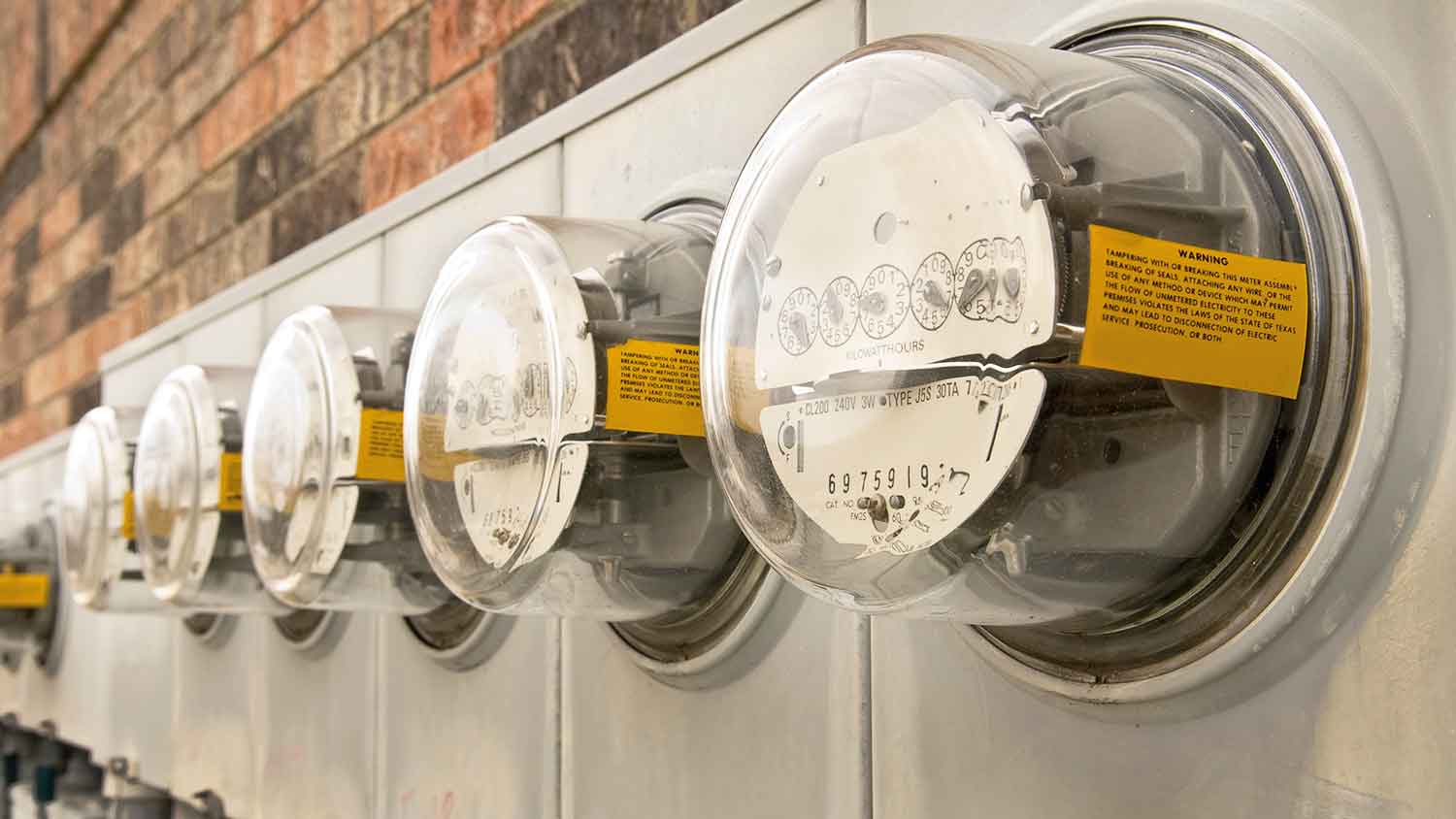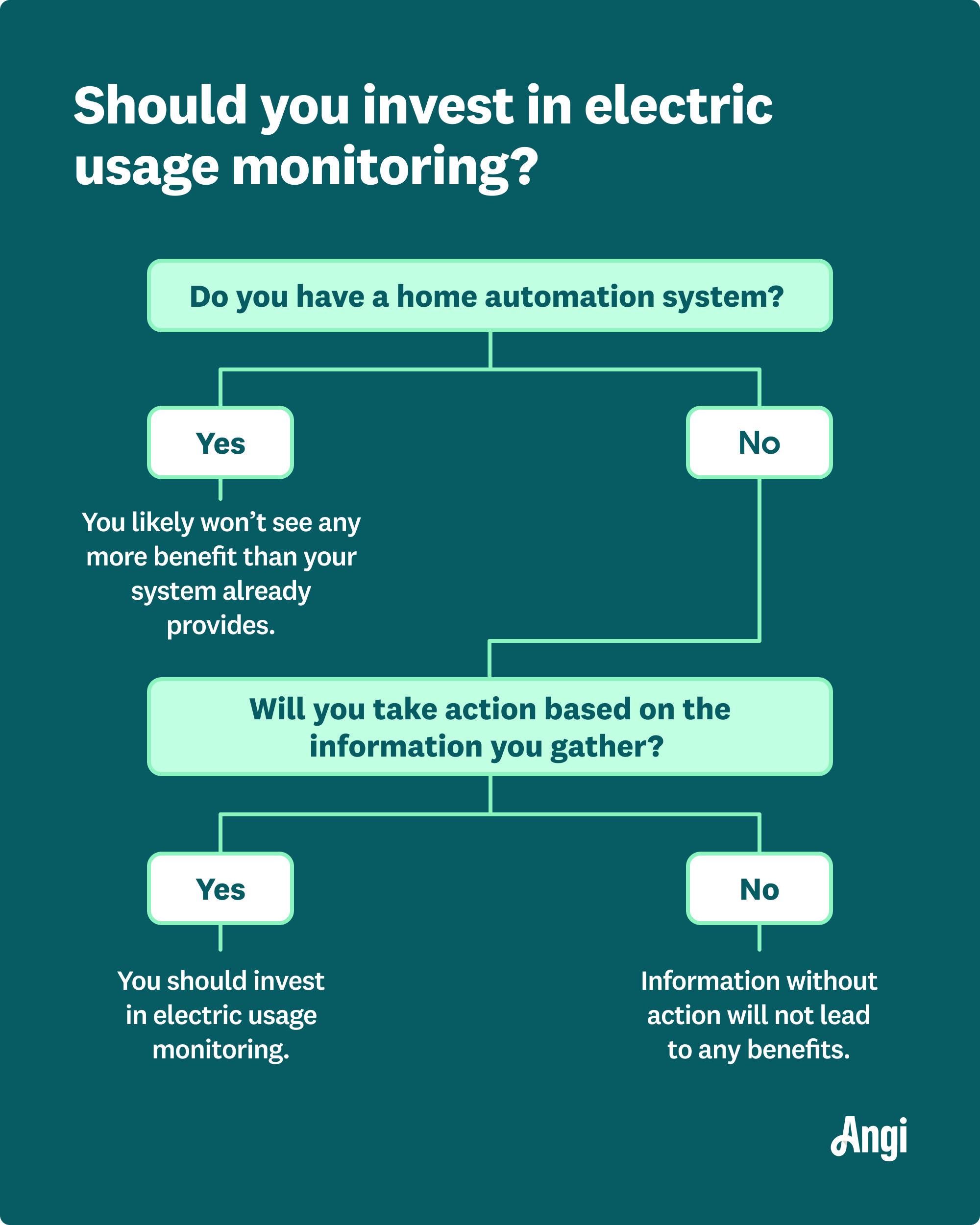
The cost to ground outlets depends on several factors. This guide will help you prepare for all of the costs involved with this project.
Paying attention to your energy usage really pays


Electric usage monitoring can help reduce energy bills.
Electric usage monitors provide energy consumption information.
Monitors are available in two types: whole-house and individual outlet monitors.
Whole-house electric usage monitors cost between $100 and $360 plus installation.
Electric usage monitoring is worth it when the information helps change habits and you don’t already own a smart home system.
There are numerous ways to reduce your energy bills. The trick is knowing which methods are the most effective while causing the least amount of inconvenience. Wondering whether turning off the lights or unplugging your cell phone charger saves more money? You don't have to just wonder after installing an electric usage monitor; you’ll know. Learn about electric usage monitoring and how to use it to lower your monthly energy costs.
Electric usage monitoring is when you use a special device to detect and record electrical voltage passing through your home's electrical service box or a single outlet location. You can then use the resulting data to adjust your home's energy consumption, discover which devices use the most energy, and even monitor how much electricity your solar panels generate.
Electric usage monitoring doesn't reduce your power bills by itself, but it gives you the knowledge to lower them. After all, knowledge is power (quite literally, in this instance).

An electric usage monitor is a specialized device that actually measures the power that your appliances and devices are drawing. Some types can even show you exactly how much this energy use costs you, and others can show you the amount of greenhouse gas emissions associated with your energy usage.
There are two common types of usage monitors available:
Whole-house electrical usage monitors: These install directly into your home's electrical service panel and continuously monitor which circuits use how much electricity throughout the house. Whole-house electrical usage monitors typically come with computer compatibility, a smartphone app, Wi-Fi capability, a monitoring screen device, or all of these.
Individual outlet electric usage monitors: These plug into an outlet and include their own plug-in location actually on the monitor itself for the electrical device that you had in the outlet. The monitor captures and records power usage data for the device you plugged in, allowing you to measure exactly how much power that device is drawing.
Individual outlet monitors are excellent for determining how much electricity a 15- or 20-amp appliance (depending on the monitor's rating) or other device uses continuously or temporarily. These monitors aren't typically rated for use by large-consumption appliances, such as electric stoves or clothes dryers.

Whole-house electric usage monitors install directly in your home's circuit breaker box. The monitors have several sensors that connect to each electrical circuit and monitor the electricity that each one uses.
The information is then sent to a screen device or app, where you can easily see how much energy each circuit consumes at any time. Many monitors can learn the electronic signatures of individual devices plugged into a circuit and provide that information, too. Some whole-house monitors also include the ability to monitor solar panel energy production.
Individual outlet monitors, often called smart plugs, perform a function similar to whole-house types but on a smaller scale. Outlet monitors only calculate the electrical consumption of the device plugged into it and send the data to a monitoring device or app. Some models allow you to use several monitors around your home and gather all the information in one place.
While electric usage monitors aren't always 100% accurate, most are accurate enough to provide you with data to help lower your energy usage and electric bills.
Usage monitors use sensors to record the voltage running through the circuit or outlet. These sensors can pick up most electrical currents; however, small amounts of current may go undetected. Combined with sensor errors or limited sensitivity, the accuracy ratings for typical monitors range from plus or minus about 1% to 6% (meaning that the measured value of electricity is typically only between 1% to 6% off from the actual value).
Electric usage monitoring provides immediate, real-time data that you can use to begin saving money on your electric bill right now. According to a study conducted by the University of Oxford’s Environmental Change Institute, people who consistently review and act on energy monitoring data save an average of 5% up to 15% on annual energy bills.
The amount of money you save by using a monitor depends on how you use the data it provides and if changing electrical consumption habits is possible for your home and family. Developing a home energy efficiency checklist and taking the advice of an energy audit company are proven methods of reducing energy consumption and saving money over time.
As far as the devices themselves are concerned, individual outlet electric usage monitors typically cost between $15 and $55, while whole-house units run between $100 and $360.
Individual monitor installation costs you nothing, as it only requires plugging in the device and setting up the phone or computer app. On the other hand, a pro must install whole-house monitors into a home's electrical panel. Usually, a local electrician can perform the work for between $100 and $300, but be sure to ask around and see what pros near you charge to get the best rate.

Electric usage monitoring is worth it if you make use of the information you gain and reduce your energy consumption habits as a result. Even though most monitors aren't entirely accurate at all times, they will provide enough data to allow you to know where you can cut energy costs. Even if you can shave only a small percentage off your monthly bill, the monitor will eventually pay for itself and, potentially, much more.
However, many people are investing in elaborate home automation systems that allow them to control numerous home functions, like turning off lights, automatically adjusting the smart thermostat, and several other energy-saving tasks. In those cases, an electrical usage monitor isn't likely to make an impact over and above the automation system.
From average costs to expert advice, get all the answers you need to get your job done.

The cost to ground outlets depends on several factors. This guide will help you prepare for all of the costs involved with this project.

If you live in a storm-prone area, you might have wondered how much a lightning protection system costs. Explore a comprehensive breakdown here.

Find out how much it costs to install a cable outlet for TV or internet. Our expert guide breaks down the costs involved in installing a new coaxial outlet and explores how you can save and if you can do this project yourself.

Selecting the right wire size helps your electrical system run safely and efficiently. Find out the correct wire size for 100-amp service panels.

Wiring your house for ethernet can provide high speed, reliable, and secure internet access. Here’s who can ethernet wire through your walls.

What’s wrong with Federal Pacific breaker panels? Get the details about why FPE breakers are no longer produced and what dangers they pose to your home.